
The entrance gate to Bukit Brown Cemetery, at Lorong Halwa
For heritage enthusiasts like me, one of the major happenings in 2013 that we have been keeping track of is definitely the road construction across Bukit Brown Cemetery. According to the latest plan released by LTA, a total 3,746 graves out of the hundred thousand existing ones will be affected. However, according to URA’s master plan, the entire cemetery will be redeveloped for housing purposes a in a few decades’ time. With the road construction starting anytime soon, I have decided to post some photos that I took when I visited the place.
Bukit Brown Cemetery
Opened: 1922
Status: Losing?
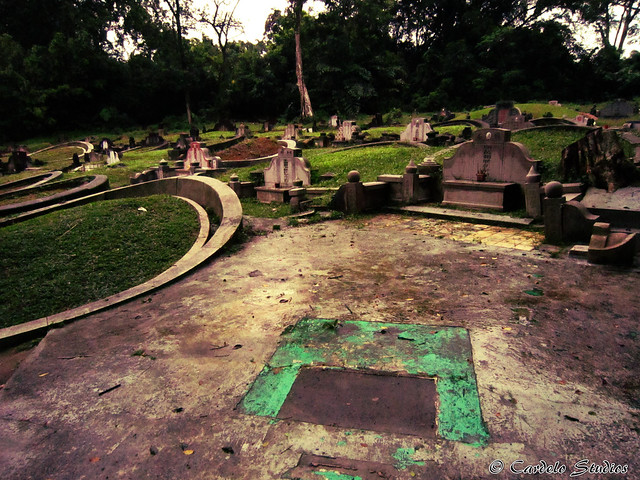
Bukit Brown Cemetery
Bukit Brown is named after George Henry Brown, a trader and ship owner who arrived in Singapore in the 1840s. He bought over the piece of land, named it Mount Pleasant (as he found the area pleasant), and lived there with his family. However, after an injury in the early 1880s, he moved to Penang to recuperate, and passed away there in 1882. Rumour has it that he sold the land away as his son drowned while fishing at a small stream near the foot of the mountain.
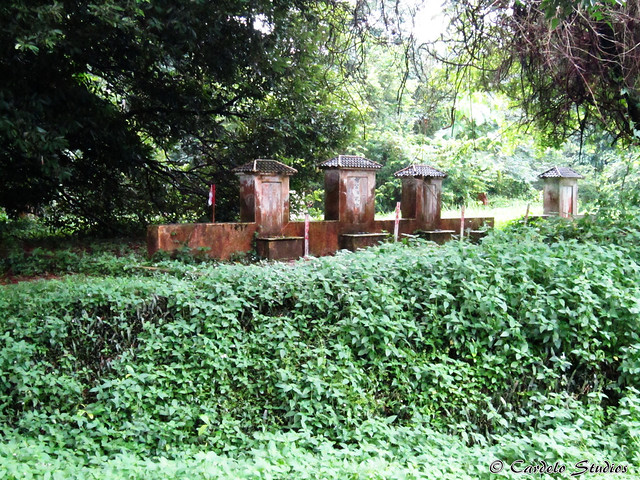
Bukit Brown Cemetery
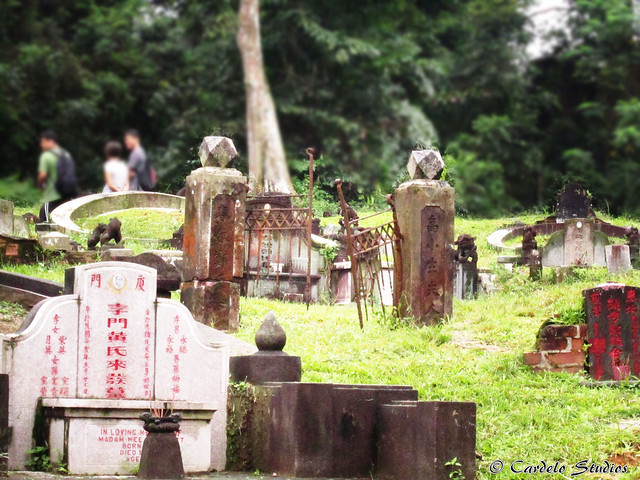
In the past, richer families would buy over large areas for all family members to be buried together. Some of them would fence up the entire area
The area was subsequently bought over by Ong Ewe Hai, Ong Kew Ho and Ong Chong Chew, 3 Hokkien businessmen who intended to use it as a burial ground for the Ong clan. During that period of time, only Hokkien Ongs were allowed to be buried there. It was known as the Seh Ong Cemetery.

Bukit Brown Cemetery
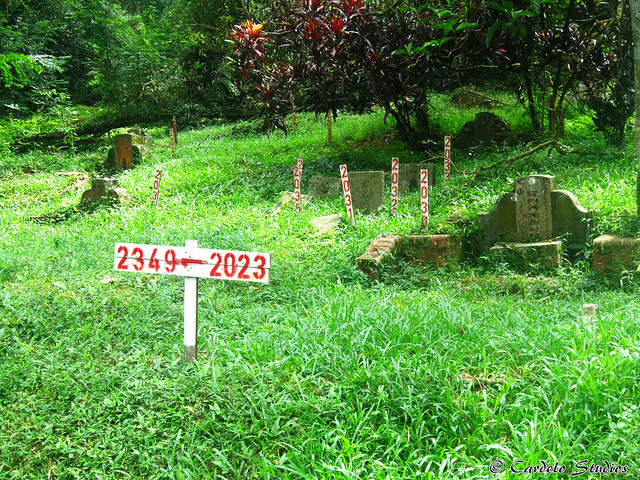
Stakes of doom – marking the tombs that will be affected by the road construction
Years later, Municipal Commissioner Tan Kheam Hock (陈谦福) pushed for the cemetery to be open to all Chinese. Eventually, the municipal authorities acquired the land, and Bukit Brown Municipal Cemetery officially opened in 1922. Kheam Hock Road, that runs through the cemetery, is named after Tan Kheam Hock. Other roads in the cemetery that are named include Sime Road, Lorong Halwa and the now defunct Jalan Berahi. There was apparently also a Bukit Brown Road in the vicinity, but it is also defunct. Lornie Road and the PIE have also cut through the burial grounds, dividing it into smaller areas. According to old maps, a Chin Chung Chinese School used to be situated at the end of Jalan Berahi.

Is there really no alternative path?
Bukit Brown is also commonly referred to as Kopi Sua (咖啡山; meaning “Coffee Hill”), possibly due to the nearby coffee plantations at that time. Burials were stopped in 1973.
Status: Found
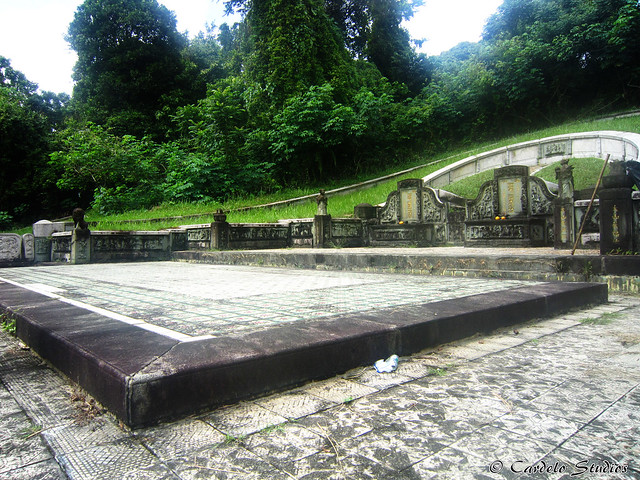
Tomb of Ong Sam Leong & wife – the largest in Bukit Brown
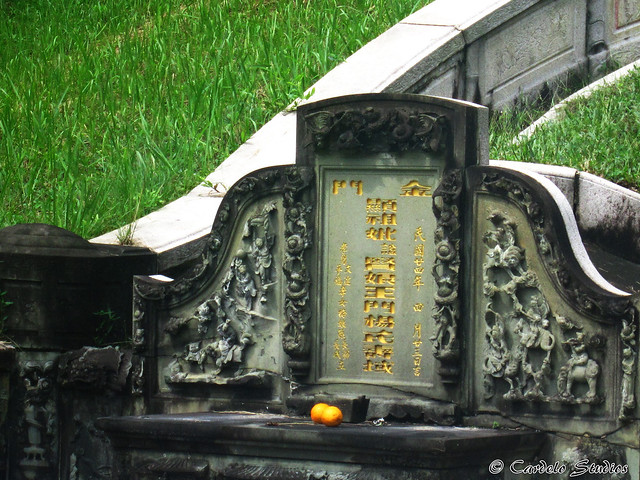
Tomb of Mdm Yeo Yean Neo, Ong Sam Leong’s wife
The tomb of Ong Sam Leong (王三龙) is perhaps one of the most famous tombs in Bukit Brown. It is known for its sheer size – almost the size of ten 3-room HDB flats – and is the largest in Bukit Brown.
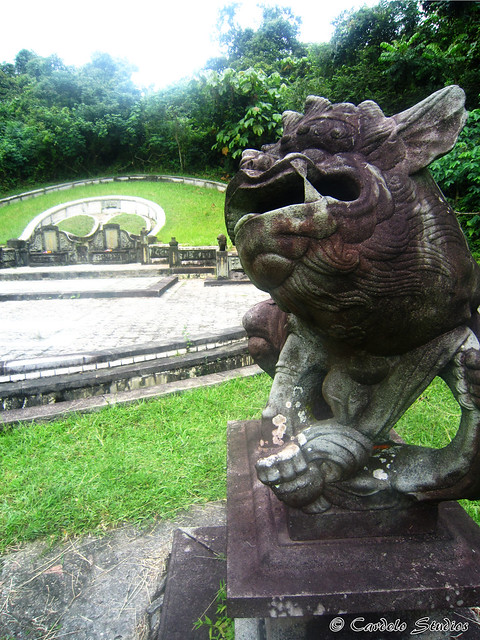
Tomb of Ong Sam Leong & wife

Tomb of Ong Sam Leong & wife
Ong Sam Leong, born in 1857, was a Chinese businessman known for supplying mining workers to Christmas Island. He was also involved in timber and brick businesses, among other things. At the time of his death in 1918, Bukit Brown Cemetery was restricted to Hokkiens with the surname Ong. There were also no regulations on plot sizes, hence the large size of his tomb.

Sikh guards are usually found at tombs of rich and important people. They are known for their bravery and loyalty
Despite its size, his tomb was hidden among thick vegetation, and was only rediscovered in 2006. Sam Leong Road, located in Little India (near City Square Mall), is named after him.
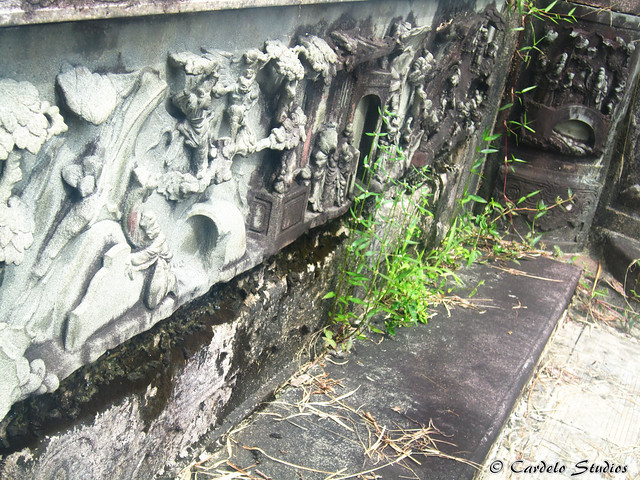
Carvings of the 24 filial piety stories (二十四孝) around the tomb
He had two sons, Ong Boon Tat (王文达) and Ong Peng Hock (王平福). They owned the New World Theme Park. Boon Tat Street is named after Ong Boon Tat.
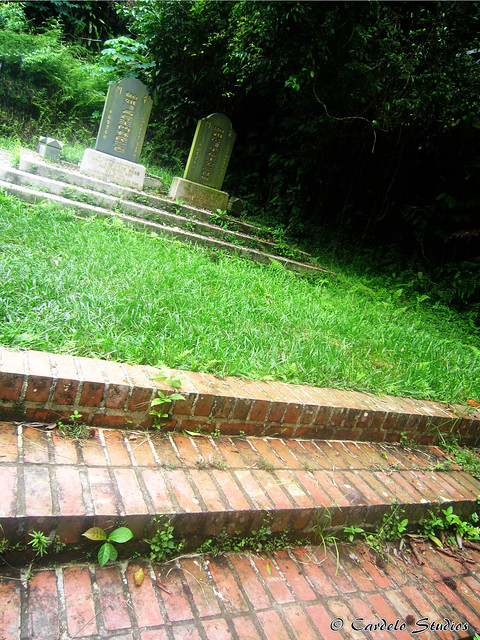
Tomb of Ong Peng Hock & wife – such western-style tombs are rare in Bukit Brown
Both sons are also buried in the vicinity.
Status: Found
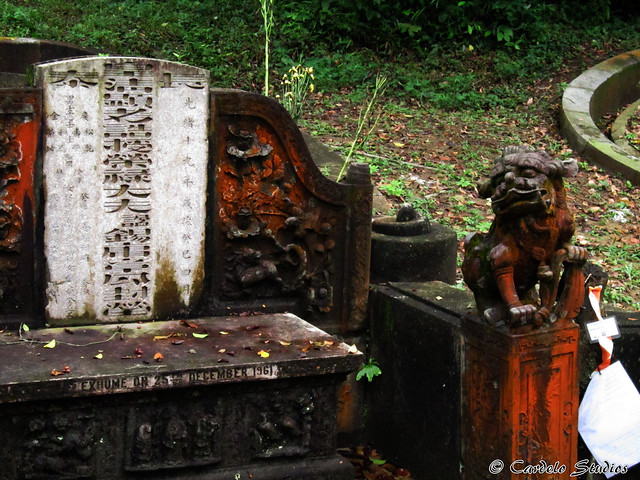
Tomb of Cheang Hong Lim
Cheang Hong Lim (章芳琳), born in 1841, was a Chinese philanthropist and community leader. He donated money to set up a free school for boys, and converted a plot of land into a public park. The park is now known as Hong Lim Park. He also had an official Qing Dynasty Imperial Title of First Ranking Official. With his power and influence, he managed to buy imperial titled for his families as well. His ancestors, and his eldest son Cheang Jim Hean (章壬宪), were given Second Ranking Official titles. Cheang Hong Lim died in 1893. Cheang Hong Lim Place, off Telok Ayer Street, is named after him. It is located near the now-defunct Cheang Hong Lim Street (where China Square Food Centre now stands). There used to be a Hong Lim Quay located along the Singapore River. There were also a lot more roads named after his family members, but they have all since been renamed or expunged.
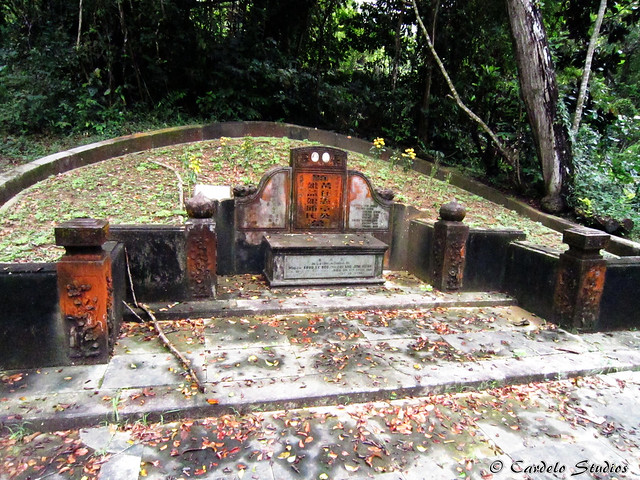
Tomb of Cheang Jim Hean & his second wife, Khoo Ek Neo
The Cheang family burial ground was initially located at Bo Beh Kang (无尾江; “No Tail River”), near present-day Alexandra Road and Mei Ling Street. They were all transferred to Bukit Brown when the area was redeveloped.
Status: Found

Tomb of Lim Chong Pang. The tomb behind belongs to his mother, Wi Pek Hay
Lim Chong Pang (林忠邦), born in 1904, was a Chinese businessman and son of Lim Nee Soon (林义顺). While Lim Nee Soon was known for his rubber and pineapple businesses, Lim Chong Pang was more involved in real estate property and the film industry. He opened and managed a number of theatres around Singapore, including Garrick Theatre in Geylang, which was originally Apollo Theatre inherited from his father. He was a member of the Singapore Rural Board, a government municipal authority, and was a committee member of the Singapore Chinese Chamber of Commerce. After his death in 1956, Westhill Estate was renamed Chong Pang Village in his memory. He was buried with his wife, Lee Poh Neo (李宝娘; daughter of Lee Choon Guan 李浚源, a famous banker) and his brother Lim Chong Kuo (林忠国; son-in-law of Tan Kah Kee). Next to Lim Chong Kuo’s tomb stands the tomb of their mother, Wi Pek Hay, a.k.a. Mrs Lim Nee Soon. Lim Nee Soon was not buried in the cluster, as he was given a state burial by the Chinese government and buried in Nanjing, near Dr Sun Yat Sen’s mausoleum.
It is said that during the Japanese invasion, Lim Chong Pang and his brother were saved from sinking ships attacked by the Japanese. Mdm Wi, however, was lost at sea.
Chong Kuo Road, near Nee Soon Camp, is named after Lim Chong Kuo. Peck Hay Road, near Newton MRT, is named after Mdm Wi. Bah Soon Pah Road, near Khatib Camp, is named after Lim Nee Soon’s Peranakan name.
There is a “Lee Poh Neo” included in the list of affected tombs released by LTA, with stake number 1905. However, I’m not sure if it’s the same tomb.
Status: Found
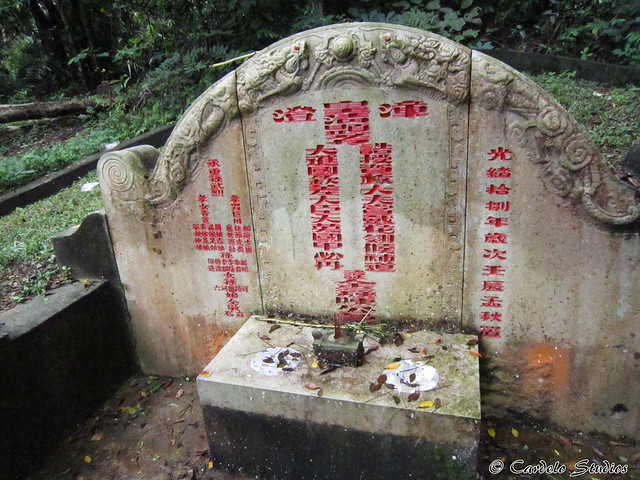
Tomb of Tan Kim Ching
Tan Kim Ching (陈金钟), born in 1829, was the eldest of 3 sons of Tan Tock Seng. Like his father, he was a successful businessman and philanthropist, and contributed greatly to the Chinese education in Singapore. He held numerous titles, including the consul for Japan, Thailand and Russia (all the accolades are listed on his tomb). He recommended Anna Leonowens to be a teacher for the immediate family of the King of Siam, and this story was made popular by films “The King and I” and “Anna and the King”. He died in 1892.
His house, known as Siam House, was located at Coleman Street. When Tao Nan School was set up by the Hokkien Huay Kuan, his grandson, Tan Boo Liat, allowed lessons to be conducted in the house until a proper campus was built at Armenian Street.
Tan Boo Liat also built the Golden Bell Mansion and named it after him. Kim Cheng Street (formerly known as Kim Ching Street), a pedestrianized street next to Tiong Bahru Market, was named after him as well. There is also a Tan Kim Cheng Road near Farrer Road and the Botanic Gardens MRT Station.
Status: Found
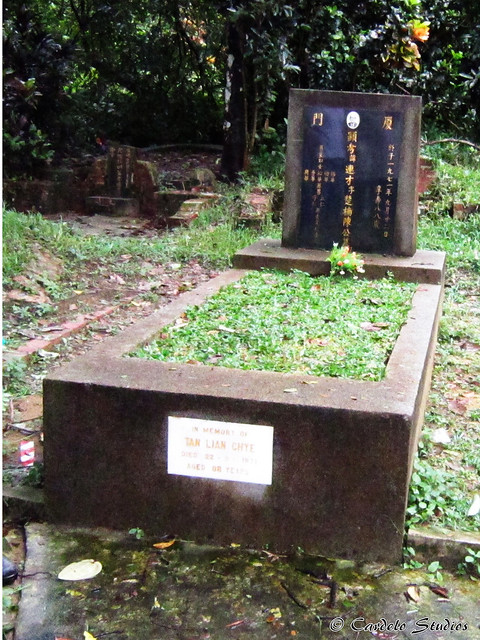
Tomb of Tan Lian Chye – another western-styled tomb
Tan Lian Chye (陈连才), born in 1884, was the son of Tan Tye (陈泰), the “pineapple king” famed for his “Istana brand” canned pineapples. Tan Tye was a fourth ranking official under the Qing government, and was an assistant director of the Tan Si Chong Su (陈氏宗祠; the Tan Clan Temple). Tan Tye Place, next to Liang Court, is named after him.
Tan Lian Chye was a member of tongmenghui (同盟会) in Singapore, and was also one of the founding members of various Chinese schools, such as Nanyang Girls High School and Chong Cheng School. He used the alias Chan Cho Nam / Tan Chor Lam (陈楚楠) during his works at tongmenghui as he did not want his 2nd “identity” to influence his businesses.
He died in 1971. While his tomb is not affected by the road construction, the tomb of his brother, Tan Lian Boh, was labelled stake number 1872, and has been exhumed.
Status: Found
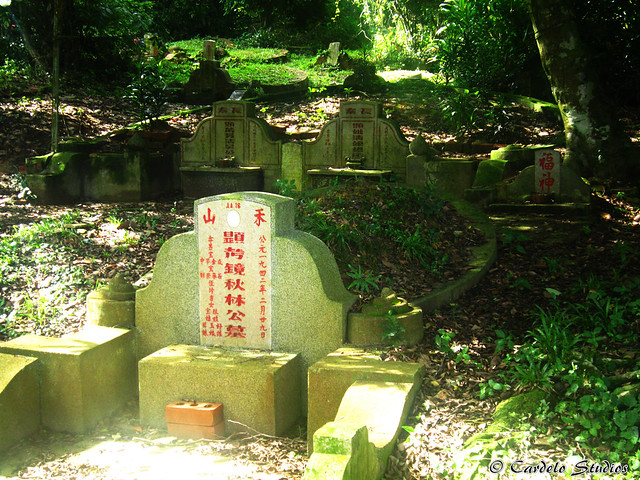
Tomb of Lim Keng Chiew
Lim Keng Chiew (林镜秋) was one of the 14 founding members of the tongmenghui branch in Singapore, and served as its secretary. He moved to Singapore from Xiamen in the 1890s after he was disillusioned with the corrupted Qing government. In addition to his work at tongmenhui, he was also a Chinese language teacher and a businessman. He also founded the Zhong Xin Ri Bao (中兴日报), a Chinese newspaper that promoted democracy. He died just at the start of the Japanese Occupation, and hence his tomb was indexed with the “AA” prefix (common to all the tombs interred by the Japanese).
Status: Found
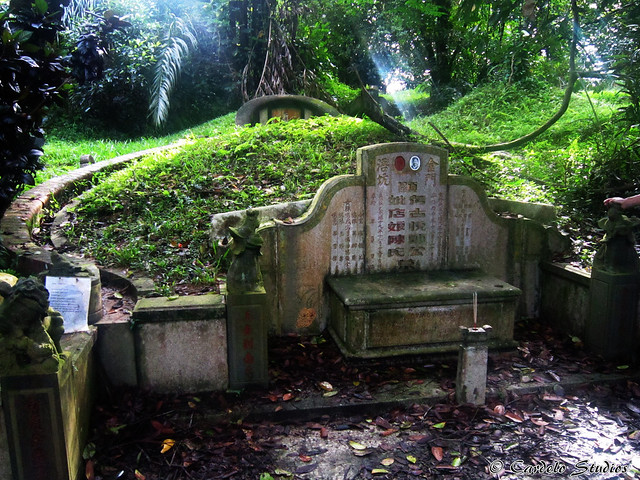
Tomb of Tay Koh Yat – his tomb is flanked by statues of the Golden Boy and Jade Girl (金童玉女)
Another tongmenghui member buried at Bukit Brown is Tay Koh Yat (郑古悦), a pioneer from Kinmen who started the Tay Koh Yat Bus Company in 1938. During the Japanese invasion, he formed a 20,000 self defense force to fight the Japanese. After the war, he formed a committee to seek justice for the massacre victims. He passed away in 1957. During his funeral, a hundred buses, cars and lorries were involved in his procession.
Status: Found

Tomb of Chew Geok Leong
Chew Geok Leong (周玉龙) was a TCM practitioner. He had prepared his own coffin prior to his death in 1939, and kept it in his house.
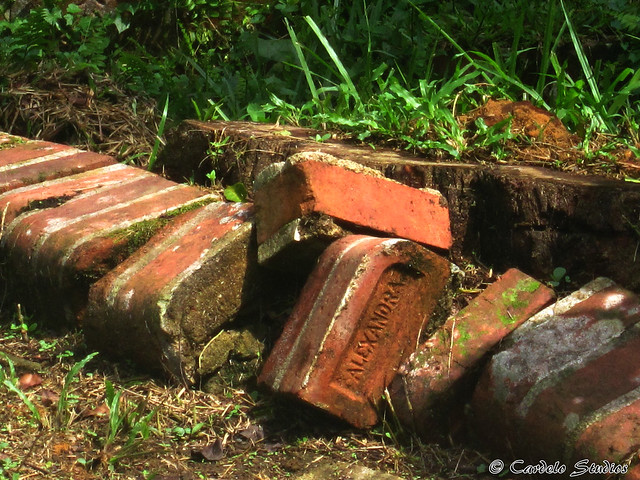
Alexandra bricks were used to construct his tomb
His tomb is one of the few tombs at Bukit Brown with Sikh guards, but is the only one that has coloured ones.
Status: Found
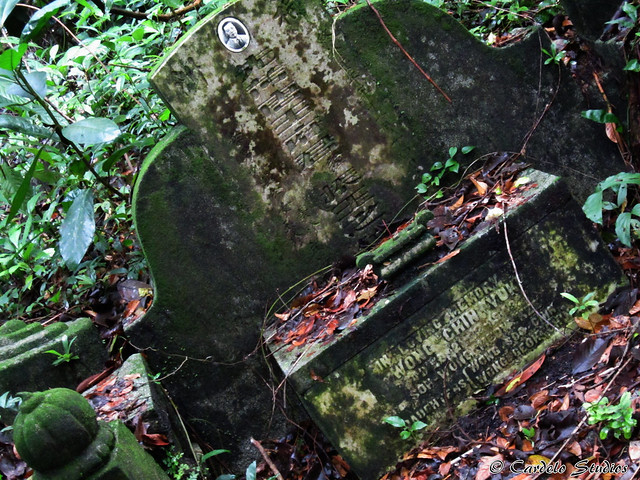
Tomb of Wong Chin Yoke
Wong Chin Yoke (王振毓) was a member of the police force, and was awarded the King’s Police Medal, the highest honour for policemen. When the Japanese invaded Singapore, he escaped to Indonesia and started an underground resistance movement. However, he was betrayed and eventually killed by the Japanese in 1943. 11 years after being buried, his remains were reinterred and buried at Bukit Brown with full police honours.
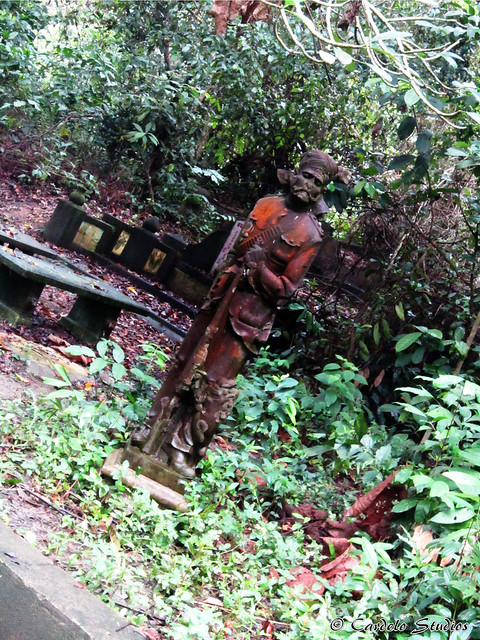
The Sikh guard protecting the final resting place of Wong Chin Yoke
Wong Chin Yoke Road is located nearby, at Mount Pheasant Cemetery.
Status: Found
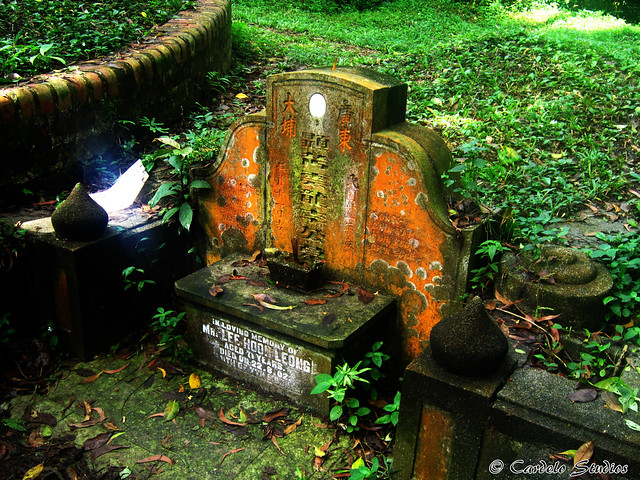
Tomb of Lee Hoon Leong
Lee Hoon Leong (李云龙), born in 1879, is Mr Lee Kuan Yew’s grandfather. He is known for his donations to school funds such as RI, ACS, SJI. He died in 1942, during the Japanese Occupation. Hence, the year indicated on his tombstone under the English name is “02”, referring to the Japanese calendar of year 2602.
Status: Found

Tomb of Lee Guay Eng
Mdm Lee Guay Eng, or Mrs Tan Cheng Siong, is the grandmother of our current president, Dr Tony Tan.
Status: Found

Tomb of Fang Shan
Fang Shan (方珊) was a coolie who died in 1833. His tomb is notable as the oldest Chinese tomb found in Singapore. However, he was not the first to be interred in Bukit Brown, as it was moved from Heng Shan Teng (near Silat Road) in 1941. His tomb is looked after periodically by the Fang Clan Association, as he is regarded as a pioneer of the Fang clan.
Status: Found

Tomb of Lin Zeyang
Lin Zeyang (林则杨), born in 1888, was the first principal of Gongshang School (工商补习学校; now Gongshang Primary school). He left Kinmen in 1912, and was a teacher in Batu Pahat, Indonesia before coming to Singapore. As principal, he pushed for the school’s move to a new campus at York Hill. As York Hill was quite desolated, he provided school bus services for the students, and the school became the first school in Singapore to have school buses. He also built a hostel, and lived there with the students. He dedicated his life to the school, until his death in 1948. As he never married, he did not have descendants when he passed away. He was buried by the school, and thus the word “principal” (校长) was written on his tomb.
Status: Found
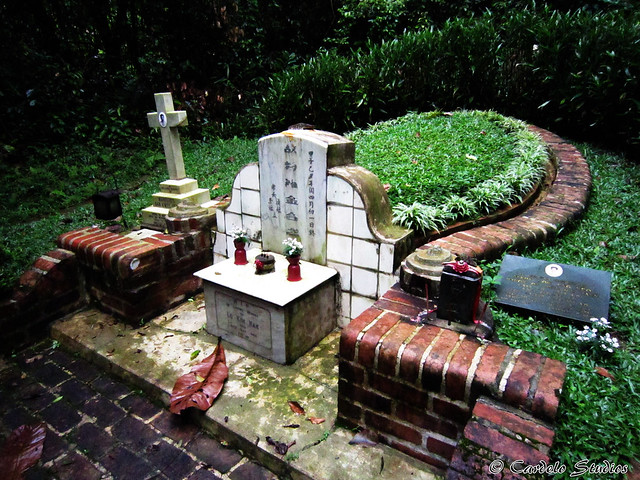
Tombs of Lo Kim Hiak (centre), Margaret Gan Kwee Geok (his wife, the cross) & Mary Low Eng Neo (their younger daughter, the plaque)
This is an interesting cluster of 3 different tombs. The traditional Chinese-style tomb in the centre belongs to Mr Lo Kim Hiak, while the cross at the side belongs to his wife, Margaret Gan Kwee Geok, who converted to Christianity at her later years. Their younger daughter, Mary Low Eng Neo, was cremated and placed to rest in Mandai Columbarium. However, Mdm Low’s adopted son moved the plaque here as he thought she would want to be with her parents.
Volunteers at Bukit Brown said that the lamp at the side would be lit most of the time, presumably by Mdm Low’s son, who also tends to the graves.
Status: Losing
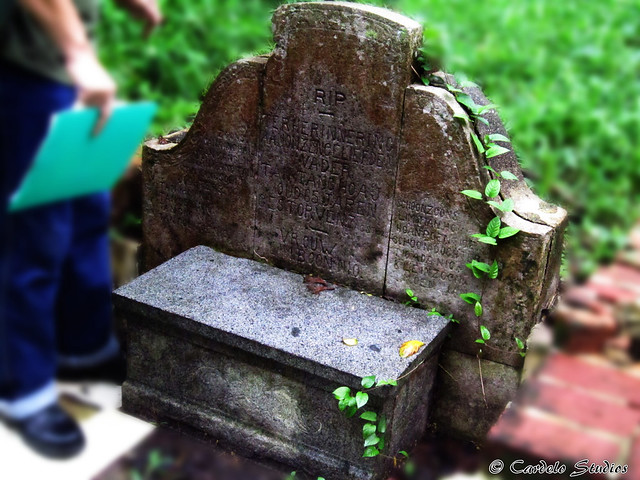
Tombs of Tan Tang Hoaj
The tomb of Tan Tang Hoaj is one of the only two tombs in Bukit Brown with Dutch inscriptions. He is probably a Peranakan Chinese from the Dutch East Indies. His name was apparently recorded as “Tan Tang Whye” in the burial register.
Both tombs with Dutch inscriptions are affected by the road construction. Its stake number is 960.
Status: Found

Tomb of Mdm Fan
Not located within Bukit Brown Cemetery, this tomb caught media attention when a jogger accidentally came across it at MacRitchie Reservoir. Like most females at that time, only her surname Fan (范) was written on her tomb. With no other tombs nearby, no one knows for sure who she was or who her families were. Some people suggested that this area might be part of Bukit Brown Cemetery (or a spill over area) before Lornie Road was constructed. It is located in between two water inlets at the southern part of MacRitchie Reservoir, and has a clear view of the reservoir.
Although the tombs that I have featured are mostly of prominent figures, Bukit Brown Cemetery is much more than that. Most of the 100,000 tombs there belong to the unsung heroes of our early history. Each of them played a part in our Singapore story, and even if the tombs are forgotten by their descendants, their contributions will be remembered. In addition, Bukit Brown is an area of rich biodiversity, and is a favourite haunt for bird watchers (it accounts for a quarter of bird species recorded in Singapore). Its serenity – a rare sight in the bustling city of Singapore – has also attracted nearby residents and horse riders of the nearby country club. More importantly, it is a vital carbon sink and rainfall sponge, purifying the air and preventing floods in nearby areas during heavy downpours. Exhumation of the three thousand affected graves has started at the end of 2013, and the highway construction has begun. We may not be in time to save the affected tombs, but the future of the remaining ones are in our hands.

The Lorong Halwa gate was removed in July 2015.
Special thanks to the Heritage Singapore – Bukit Brown Cemetery group for organising the tours.
File Last Updated: July 21, 2015


Thank you for posting this. I and other interspecies communicators have communed with the flora and fauna from Bukit Brown Forest in the areas that are affected by this highway construction project. And many are saddened that the project will continue and as always, many have moved on to find new homes for themselves.
If you are interested in reading their messages pls. visit: http://www.oribeldivine.com/the-voice-of-bukit-brown
Oribel
There seems to be some errors in the write up relating to Tan Kim Ching.
Firstly, he was born in 1829 and not 1825.
Secondly, Tan Kim Ching passed on in 1892 before the Tao Nan School was started. it was his eldest grandson, Tan Boo Liat who allowed the first classes of Tao Nan school to begin in Tan Kim Ching’s sprawling mansion known as Siam House.
Hi, thanks for the info. I’ve updated the post accordingly.
hi..may i have the directions to the tomb of Lim Keng Chiew if you have it..?
thank u very much..!
Hi Alvin, so sorry but I didn’t note down the locations of the tombs. I visited Bukit Brown quite some time ago and I can’t remember the directions I took. There are volunteers who conduct regular tours in the cemetery, they should be more familiar with it. You might want to check http://bukitbrown.com/main/ to reach out to them. Cheers!
ok, i’ll try there..thank u very much Mr Cardelo!! 🙂
Pingback: Through the Water Fairy Gate | lostnfiledsg